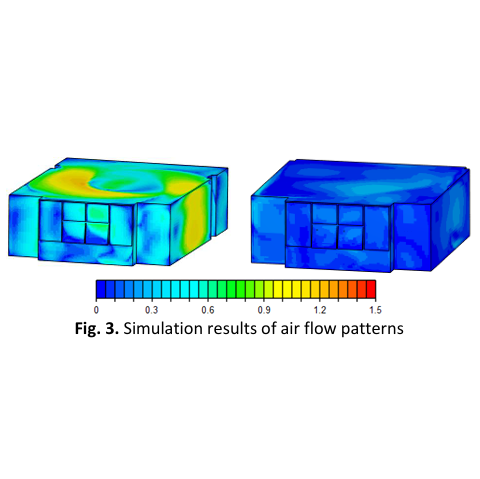The Analysis of Building Thermal Comfort based on Air Flow Pattern by using SIMSCALE Simulation
DOI:
https://doi.org/10.37934/arfmts.123.2.175183Keywords:
Thermal comfort, air flow pattern, SIMSCALE simulationAbstract
Thermal condition is one of the most important elements of comfort, which can affect people’s activities and working circumstances. Thermal comfort in a room can be controlled by improving the quality of ventilation and designing air flow. This study aims to determine the thermal comfort of a building by using simulation. The data used are building design specification, air temperature, and air flow pattern. The simulation input variables are the 3D model of the room design, maximum and average air temperatures and average air flow velocity values. The expected simulation output are air temperature contour data and air flow patterns. These two values of output are then compared with Indonesia’s national standard SNI 03-6572-2001 and subjective reactions to determine comfort in the rooms. The results show that based on the air temperature contour, the wider the room the air temperature tends to be in a comfortable condition. It also shows that the ratio of the opening area to the floor area can influence the cooling of the air temperature in the room. Based on the flow pattern air, openings facing each other in a room will improve air circulation and it is influenced by the ratio of the area of the opening to the area of the room. The research results show that air temperature contours and air flow patterns can be a reference for determining thermal comfort in a room. Regarding the output of simulation, it is recommended that the energy savings calculations need to be carried out to find out how much impact the building's natural ventilation performance has on electrical energy use.
Downloads

































